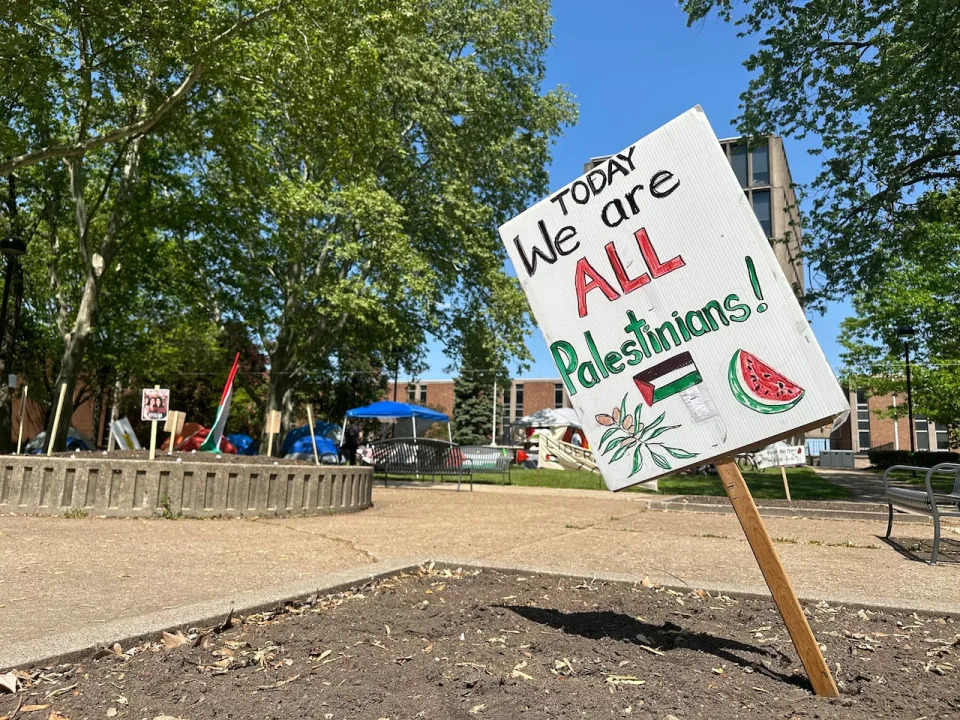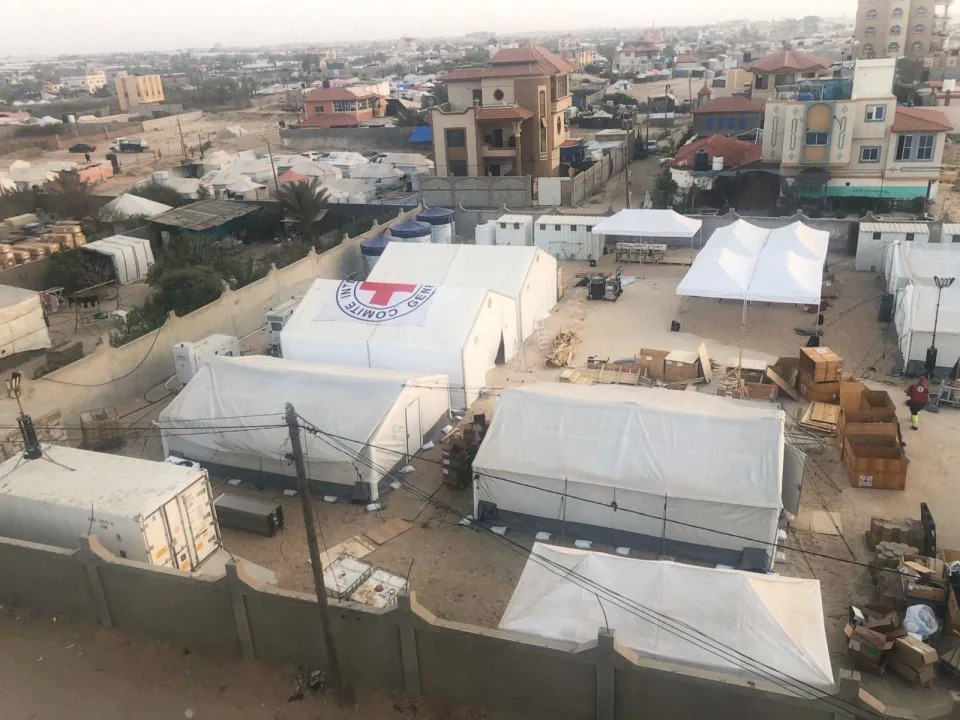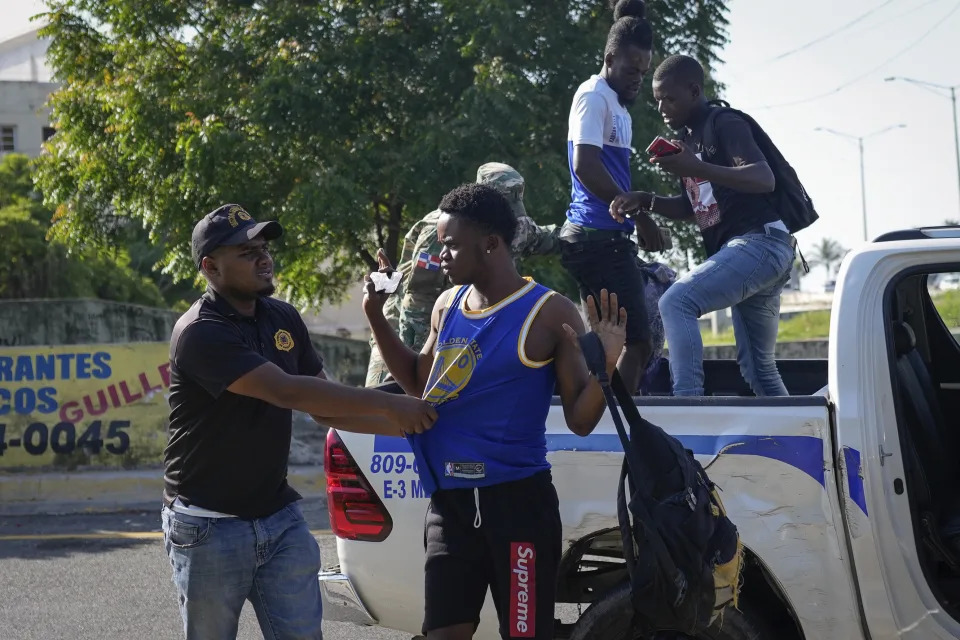Wed, May 15, 2024

A pro-Palestinian encampment at the University of Windsor, Ont., started May 10. (Jennifer La Grassa/CBC - image credit)
The University of Windsor's president says the school has reached out to arrange a meeting with the organizers of a pro-Palestinian encampment on campus.
At an unrelated news conference Wednesday morning, president Robert Gordon told reporters that the school in southwestern Ontario reached out Tuesday morning and hopes to talk to the group in the coming days. There is no set date at this time.
Gordon said the school hopes to talk about what the group "would like to see done, but also for us to just be able to listen and learn to get a better context of what are the broader issues they expect the university to consider moving forward."
The pro-Palestinian encampment first started as a protest on May 9, among many in Canada and the U.S. that have sprung up related to the months-long Israel-Hamas war in Gaza.
The student movement began at Columbia University in New York City on April 17 before protesters were forcefully cleared by police at the request of administrators.
In Canada, encampments have also sprung up at Montreal's McGill University, the University of Toronto, the University of British Columbia and McMaster University in Hamilton.

University of Windsor president Robert Gordon told reporters Wednesday that the school plans on meeting with encampment organizers in the next few days.
University of Windsor president Robert Gordon told reporters Wednesday that the school plans on meeting with encampment organizers in the next few days. (Jennifer La Grassa/CBC)
A day later, more than 20 students set up about 15 tents on the southwestern Ontario university's grounds and have been sleeping on the lawn across from Dillon Hall to get the attention of school administration.
The group has six demands it wants the university to meet: disclose investments that benefit Israel, divest of those investments, declare a stance in the war, defend and support students and boycott academic institutions with ties to Israel.

The University of Windsor says it appreciates the way students are protesting in a peaceful and safe manner on campus.
The University of Windsor says it appreciates the way students are protesting in a peaceful and safe manner on campus. (Jennifer La Grassa/CBC)
Co-organizer of the encampment, Jana Jandal Alrifai, told CBC News she's "not optimistic that administration is going to come into this meeting with concrete steps or concessions that they are willing to make.
"I am hoping and imploring that that's what they do, because if they don't want us here, they don't want us sleeping here, then we're not just using empty words or statements or promises, that is not what we are looking for," she said.
Broadly speaking, the protesters at the campus encampments are demanding that their universities disclose their stakes in and divest from investments they say support Israel's actions against Palestinians, such as weapons manufacturers and the defence industry more generally.
University plans to 'listen,' 'get context' from meeting
The group has claimed that the university has about $900 million invested in funds that indirectly go to Israel's military industries.
When asked to confirm whether this is the case, Gordon said he hopes to clarify where the group got that number from.

Jana Jandal Alrifai is a co-organizer of the encampment on campus. She says they want the university to have a plan to meet their demands.
Jana Jandal Alrifai is a co-organizer of the encampment on campus. She says they want the university to have a plan to meet their demands. (Jennifer La Grassa/CBC)
"I think there is a little bit of confusion of how that number was arrived at," he said.
"The intentions I think are with this first meeting to listen, to just get better context how some of these numbers have been established."
As for whether the university will take a stance and support Palestinians — another demand from the group — Gordon said they are "happy to have conversations."
"These are complex geopolitical issues that we are doing our best to try to make sure that we are first and foremost supporting our university community," he said.

Students have been camped on the University of Windsor campus since Friday. Students say they will stay until University of Windsor officials meets with them about their demands for divestments.
Students have been camped on the University of Windsor campus since Friday. Students say they will stay until University of Windsor officials meets with them about their demands for divestments. (Jennifer La Grassa)
But Jandal Alrifai said she wants to see the university come to the table seriously considering their demands and a plan for when and how the school will implement them.
"The assumption is that we got this meeting, we're going to quiet down for a little bit, but that's not true," she said.
"The meeting is only one part of what we're trying to achieve here."
A total of 253 hostages were seized in the Hamas-led attack on southern Israel on Oct. 7 in which about 1,200 Israelis were also killed, according to Israeli counts. Israel's offensive has killed more than 35,000 Palestinians over the last seven months, mostly women and children, health officials in Gaza said.











































